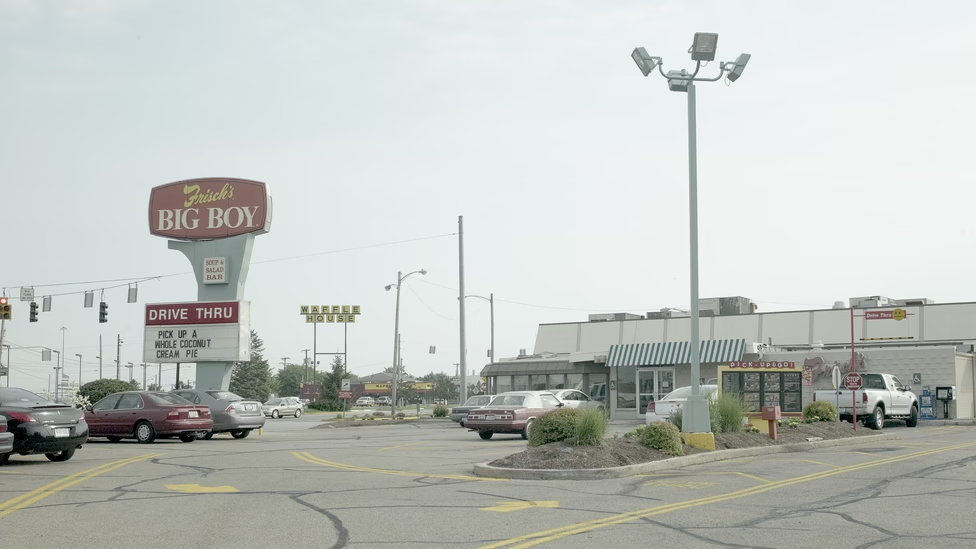This article was originally published in The Atlantic.
The homogeneity of the suburbs has an upside: If strip malls and subdivisions remind you of home, you can feel nostalgic almost anywhere.
If you listen to the experts, much of the place I’m from is not a place at all. Suburban Michigan is full of winding roads dotted with identical houses, strip malls stuffed with chain restaurants and big-box stores, and thoroughfares designed for cars, with pedestrian walkways as an afterthought. The anthropologist Marc Augé coined the term non-places to describe interchangeable, impersonal spaces lacking in history and culture that people pass through quickly and anonymously. Non-places—such as shopping centers, gas stations, and highways—can be found everywhere but seem to particularly proliferate in suburbs like the one I grew up in. The writer James Howard Kunstler memorably called this sort of landscape “the geography of nowhere.”



